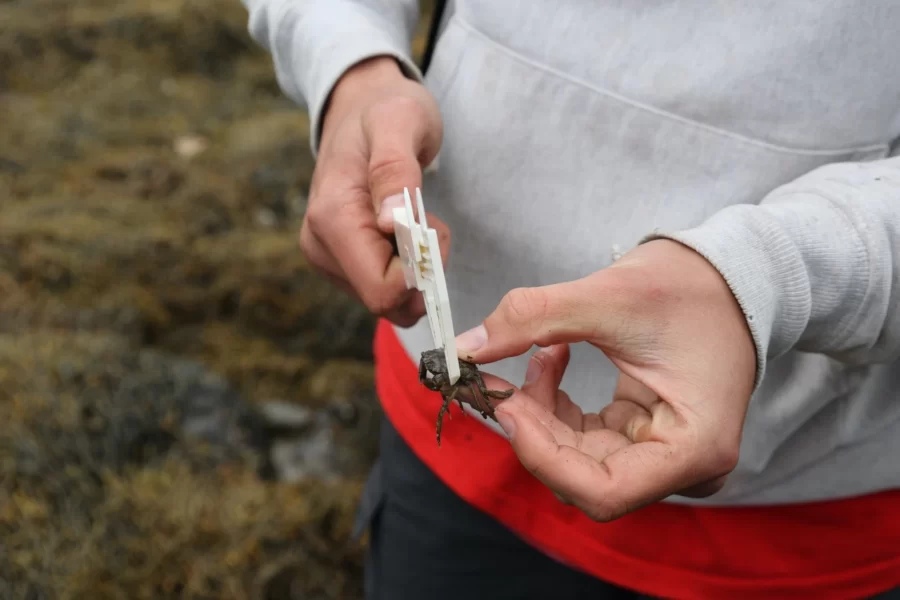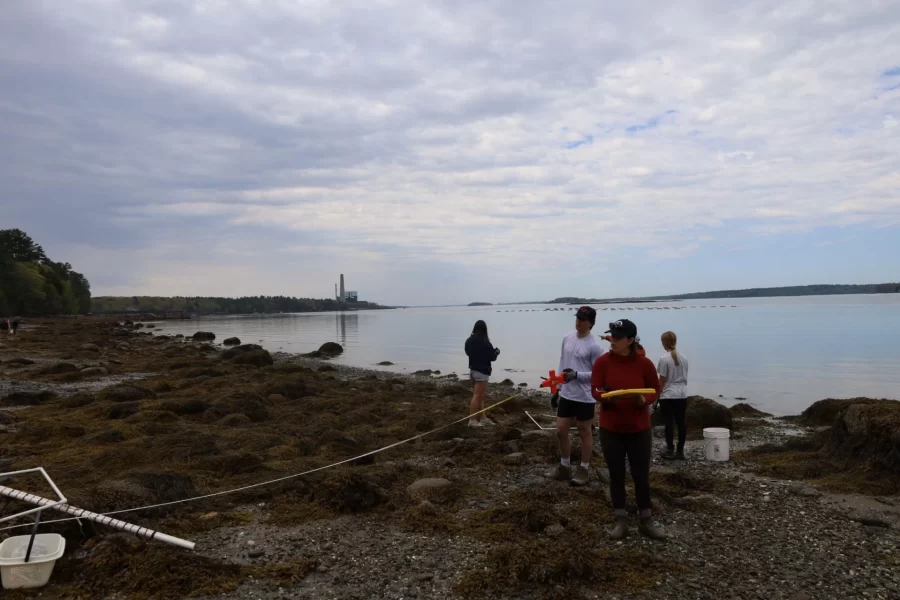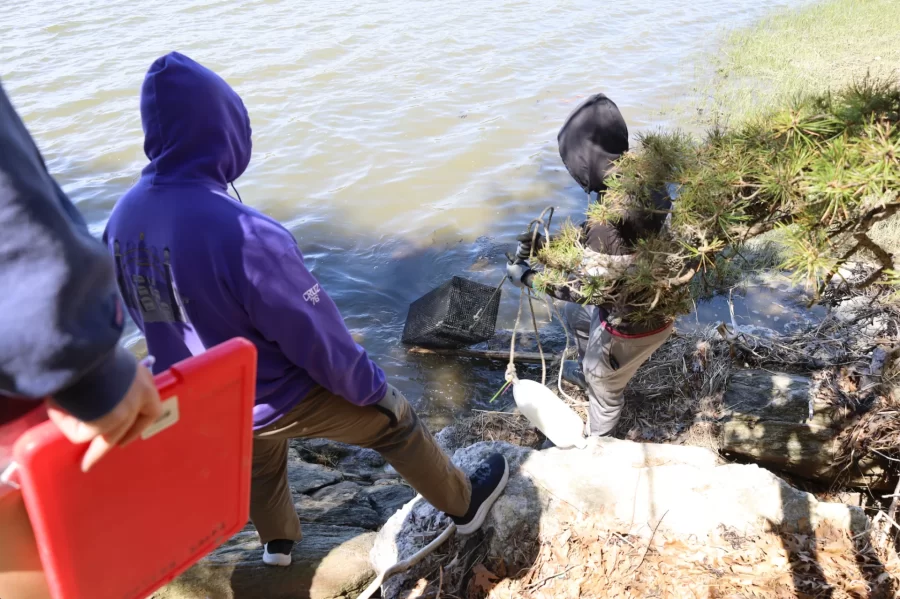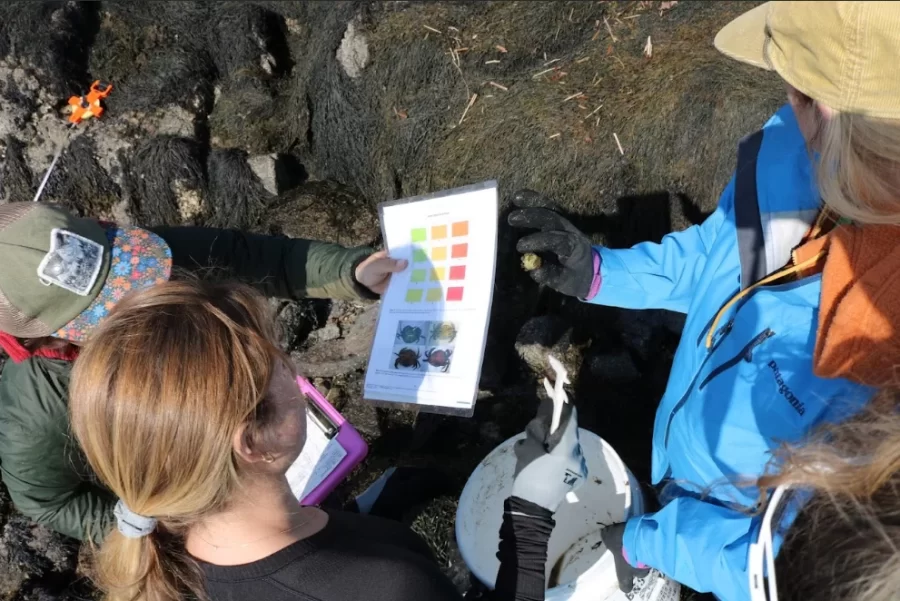Feeling Crabby
In the depths of Bonney Science Center, you’ll find Jesse Minor’s Biology short-term students sitting in slightly awkward silence, waiting eagerly to dive into the topic of invasive European green crabs. The uniting factor was the voracious green crabs, an invasive species becoming increasingly prevalent in Maine. Green crabs are native to Europe and traveled here in the hulls of boats. They are an incredibly effective invader, causing damage to native species, habitats, and ecosystems. As the class got more familiar with the crabs we’d be spending the next three weeks with, we also spent some time getting more familiar with each other. The very next day, we jumped directly into field work, doing crab monitoring and geomorphic site assessments for Manomet’s Resilient Habitats Program. So, it was vital that the group worked well together. To support this, we were assigned rotating roles to keep everything organized. These roles would take us through the next three weeks of crab monitoring, trapping, DNA sequencing, and more.

We conducted surveys throughout the month of May due to the high intertidal productivity during this time period. All of our data collection took place at wave-sheltered rocky intertidal zones. To begin we set up a 50-meter transect line parallel to the tide at the low intertidal zone. We then threw 1-meter quadrats along the transect line, taking note of the percent movable rock and algal cover within. In each quadrat we lifted the moveable rock and moved algae to find crabs. We recorded the crab species, carapace width, sex, number of claws and legs, shell condition, whether ovigerous, color, and additional notes on our data sheets. We then returned the crabs and rocks back to their original habitat, in order to prevent skewed data for future studies.
Site assessments in biology are crucial for understanding and evaluating the ecological characteristics and potential impacts of a particular location. We performed site assessments along the coast of Maine in hopes of gathering valuable information about the environmental conditions present in the field site. By assessing a site’s ecological features, our class was able to determine the variations in the abundance of green crabs across different locations, comparing them to the diverse ecosystems present in the studied areas. Site assessment provides a baseline understanding of the ecosystem, which enables us to monitor change over time, identify threats, and develop appropriate mitigation strategies.

We set experimental green crab traps and used canned sardines as bait. These traps soaked overnight. Unfortunately, we had to set the traps at high tide and were unable to maximize the haul, but successfully caught crabs nonetheless. Since the traps were set at high tide, we believe they were actually out of the water once the tide went out completely. This would mean that the traps were not fishing the full time they were in the habitat. In the future, we advise anyone attempting to collect these crabs to make sure they set the traps at low tide in the lower intertidal zone. Between the traps at Morse Mountain and Spirit Pond, we trapped a total of 36 crabs.

With Professor Larissa Williams, we performed a DNA analysis of the green crabs. We collected crabs from the shores of Yarmouth and Brooksville, Maine, isolated their DNA, and analyzed them by using PCR. By doing this, we were able to match DNA of the selected crabs to their geographic origin. We found that all of the crabs we performed a DNA analysis on were from the Southern region of Europe. With this laboratory experience, our class not only gained valuable communication and laboratory skills, but also gained a deeper understanding of the practical significance of DNA analysis in the inventory and monitoring of green crabs.
This experience provided a lot of useful skills including fieldwork methods, data collection, DNA isolation and PCR, scientific reporting, and poster making. Additionally, this opportunity gave students a chance to practice communication, collaboration, flexibility, and independence in scientific research.

Learning about invasive species allowed the class as a whole to understand their detrimental nature. Through our research with green crabs, we learned there are many viable options to mitigating this pest, including developing market-based solutions such as compost, bioplastics, edible products, and even whiskey! However, the general public is not informed on these simple solutions, and market-based solutions involving green crabs are slow to develop. The goal of this class is not only to provide service-learning assistance to Manomet via data collection and site assessments, but also to inform people at Bates and the local community about how this invasive species can be controlled if we act now. Through popular attractions like crab boat rides, culinary opportunities, crab-based household products, and other unique ways, we can decrease the green crab population using a sustainable approach.
READ MORE in this article in the Bates News.